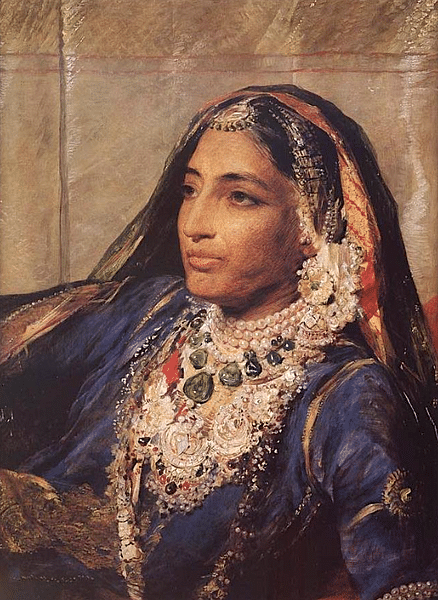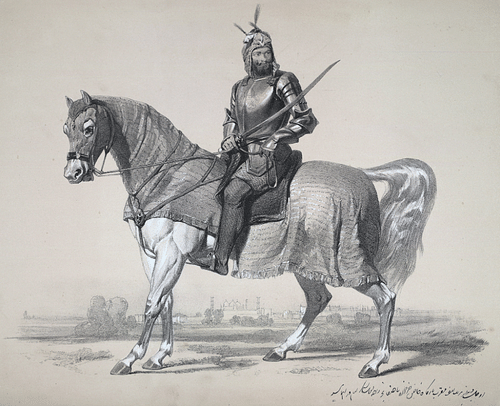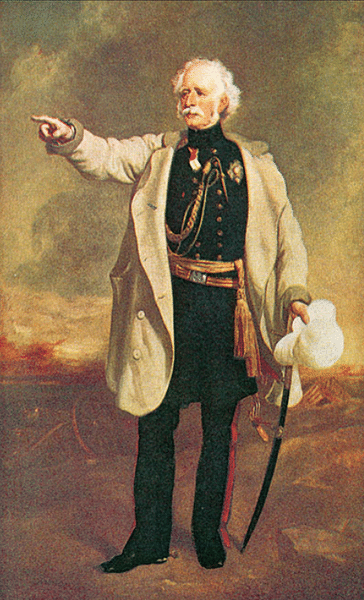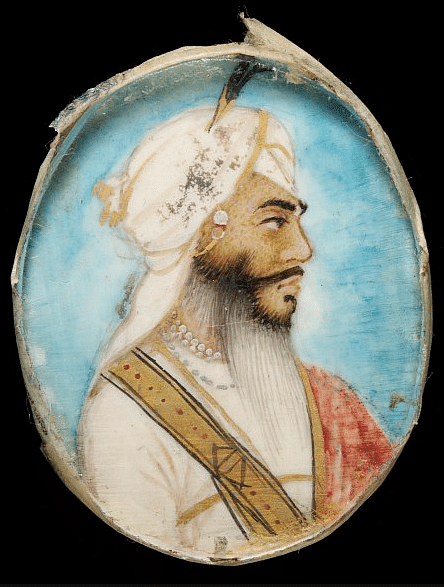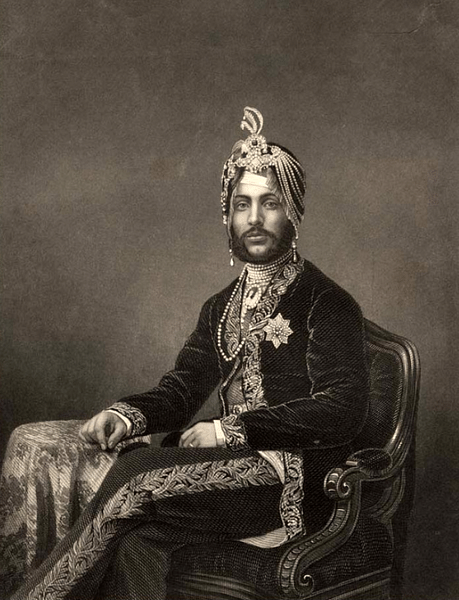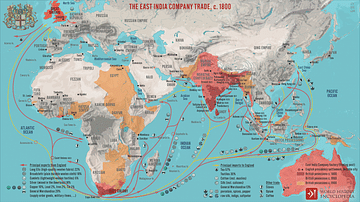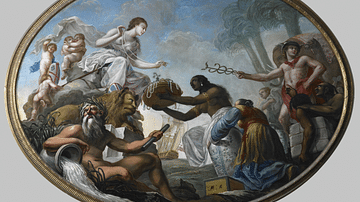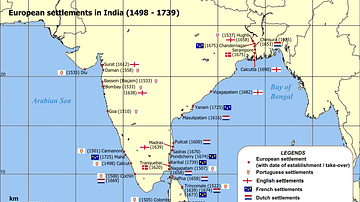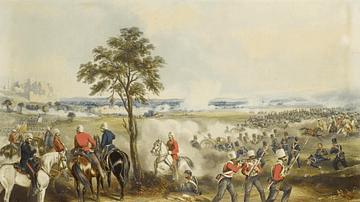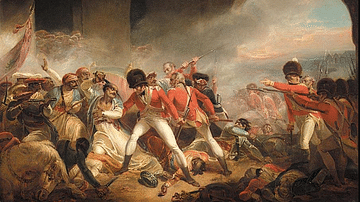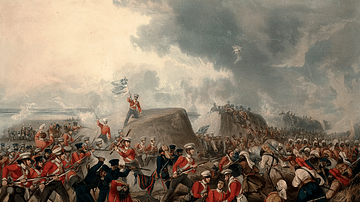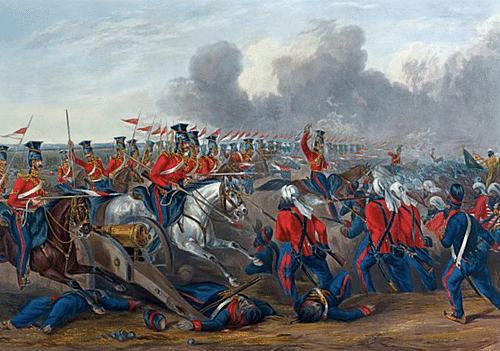
The First Anglo-Sikh War (1845-6) was a short and bloody conflict won by the British East India Company (EIC) against the Sikh Empire. The EIC was keen to expand into northern India, but the Sikh army was a well-trained, well-equipped, and hard-fighting obstacle. Traitorous Sikh generals were largely responsible for the eventual EIC victory.
The First Anglo-Sikh War did not resolve the differences between the two sides or stabilise the fluid geopolitical situation of the North-West Frontier, and so the Second Anglo-Sikh War broke out in 1848. This second conflict was won by the EIC in 1849, and the British annexed the Punjab into their growing empire.
The East India Company
The British East India Company had started as a trading company, but by the mid-18th century, it had begun to look like the colonial arm of the British Crown in India with its territorial expansion across the subcontinent. The Company had won vital encounters with rival powers, like the 1757 Battle of Plassey and the 1764 Battle of Buxar, which gave the British a vast and regular income in local taxes, besides other riches. The EIC kept on expanding and defeated the southern Kingdom of Mysore in the three Anglo-Mysore Wars (1767-1799). Intertwined with those wars was a long-running contest with the Maratha Confederacy of Hindu princes in central and northern India. The EIC once again emerged victorious after the three Anglo-Maratha Wars (1775-1819). Next came expansion in the far northeast and more victories in the Anglo-Nepalese War (1814-1815) and what turned out to be three Anglo-Burmese Wars (1824-1885). The next target of the EIC was northwest India and the Punjab.
The Sikh Empire
The historical centre of Sikhs is the Punjab in the northwest of the Indian subcontinent, an area which today covers parts of Pakistan and India. Sikhs follow the faith known as Gurmat, meaning "the way of the Guru", and although it has some original points of contact with Hinduism, it is a distinct religion, a fact which helped give the Punjab a unique sense of identity. The Sikhs were strikingly different in physical terms since they did not cut their hair but wore it long and tied up inside a turban, and, for the same reason, sported a beard and often extravagant moustache. The Sikhs had established themselves as a state in the 18th century following the gradual decline of the Mughal Empire (1526-1857). There were, too, significant minority groups in the empire, notably Hindus and Muslims. Sikh territories were divided between 12 misls or armies, each led by a chief. These military leaders formed a loose confederation and met twice each year at Amritsar.
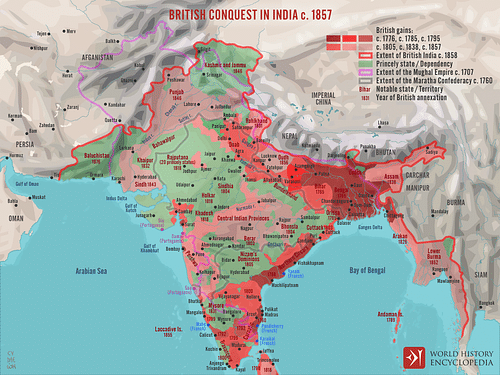
The man who really unified the Sikhs was Ranjit Singh (1780-1839), the Lion of Lahore. Singh inherited the role as leader of the Sukerchakias misl in 1793, and after several victories, which included defeating Afghan raiders and taking control of Lahore, he proclaimed himself Maharaja in 1801. Ranjit Singh reformed the Sikh army, replacing the outdated focus on cavalry with a combination of well-trained infantry and artillery units. Sikh expansion duly continued, notably with the capture of Amritsar in 1802, but a treaty recognising spheres of influence was signed with the EIC in 1809, the Treaty of Amritsar. Ranjit Singh, nevertheless, kept on conquering and ultimately took over Multan and Kashmir (1819), Ladakh (1833), and Peshawar (1834).
The EIC was involved in the first Anglo-Afghan War from 1838 to 1842, which went very badly, and, concerned at the relentless Sikh expansion, it signed a treaty with the Sikhs and Afghans to protect existing borders in 1839. The North-West Frontier, as it became known, was a hotly disputed area of the subcontinent (and still is today), particularly the strategically important Khyber Pass, which links Afghanistan to what is today Pakistan. The Afghans, the Sikhs, and the British all had their eyes on controlling this frontier.
Following Singh's death in June 1839, the Sikh confederacy became divided – two chiefs were assassinated in the political turmoil – and the EIC, seeing an opportunity for yet more expansion, used its considerable experience in diplomacy to help widen the differences between the misls even further. After three rulers came and went in rapid file and suspicious circumstances, Rajit Singh's youngest son, Duleep Singh (l. 1838-1893), was selected as the new Sikh ruler in 1843, but as he was but a child, his mother, Jind Kaur (aka Rani Jindan, d. 1863), ruled as regent. Jind Kaur supported a military escapade against the British since, even if the Sikhs lost, this would cut the army down to size, perhaps ending the interference of the generals in government affairs and certainly reducing the threat of a military coup.
The British took over the Sindh province (southwest of the Punjab) in 1843, which had been ineffectively ruled by amirs for some time. Confident that some of the Sikh misls in the east supported closer ties with the EIC, the British prepared for war in the Punjab and amassed an army of 40,000 men to the southeast of the Sikh state. In the wider world of empires, the British no longer considered the Sikh Empire a useful buffer zone in case of expansion of the Russian Empire into Afghanistan and northern India – the so-called Great Game. If the Sikhs were to retain their independence between these two great empires, they would have to fight for it.
Sikh & EIC Armies
Ranjit Singh had created a well-trained, well-equipped, and very capable fighting force during his reign. This Sikh army was called the Khalsa. The infantry was even better paid than their counterparts in the armies of the East India Company, although pay was often in arrears. The Maharaja had used European mercenaries (typically French and British but also one Italian, Paolo Avitabile) to ensure his armies were disciplined and used the latest fighting techniques. By 1845, the Sikh army had some 6,200 cavalry, 70,000 infantry, and 500 artillery pieces. This core army was increased by raising local levies and employing irregular untrained troops and cavalry. Finally, there was a unit of 1,000 cavalry known as the Akalis, who were religious fanatics who fought bravely but rarely accepted to take battle orders. A typical Sikh army brigade was composed of around 3,000 infantry, 1,500 cavalry, and 35 cannons, making them efficient, compact, and mobile fighting units.
All of these advantages in numbers and weaponry were somewhat negated by the decline in discipline in the Sikh army during the turbulent years following Ranjit Singh's death. Many commanders had been selected for their political allegiance rather than their martial abilities, and ordinary soldiers were left to do as they please. Another serious problem was pay. When the Sikh Empire stopped expanding from 1840, the opportunities for booty to pay its armies evaporated. Loyalty and ill-discipline where looting of civilian communities was rife meant the Sikh army was a large and unpredictable beast for both sides.
The EIC army, at least in this part of India, was smaller than the Sikh Empire's but well-trained and well-equipped. The infantry had bayoneted and cap-ignited muskets with which a skilled shooter could fire an impressive four rounds a minute. The Company employed a mix of British soldiers, Indian sepoys (infantry), and mixed cavalry. It also hired out regiments of the regular British army and employed such fearsome fighters as the Gurkhas of recently conquered Nepal. Vastly experienced, EIC armies had enjoyed a long string of successes in wars across the subcontinent over the last century, and the confidence of both the ordinary soldier and their commanders was high. If anything, perhaps confidence was a little too high as the experienced EIC commanders jostled for supremacy and glory, took unnecessary risks, and rarely waited for reinforcements before engaging the enemy.
The Battles
On 11 December 1845, the Sikhs, squeezed on all sides by the EIC, attacked first. A Sikh army crossed the Sutlej river into EIC territory. This action broke the terms of the 1809 treaty, and so the EIC declared war on the Sikh Empire on 13 December. So the First Anglo-Sikh War began. It was a short affair, lasting only three months, but within that period were five large battles. The British had at their disposal 54,000 men, still at least 6,000 fewer than the Sikhs, and significantly, the British armies were dispersed across the Punjab.
The first battle of the war was at Mudki on 18 December 1845, which, thanks to its numerical superiority and despite the skilled Sikh artillery batteries and sniper fire, the EIC won. Many of the British officers had believed the Sikhs would hastily retreat when the fighting started, but the bloody Battle of Mudki showed beyond doubt that this was going to be a war of attrition.
The Battle of Ferozeshah on 21-22 December was a marginal victory for the EIC, given the high cost in casualties. The latter was largely due to the commander-in-chief Sir Hugh Gough (1779-1869) insisting on a full frontal infantry attack with bayonets, a tactic which may have proved successful in the past but which was much less so against a modern army like the Khalsa. Gough was described by one officer as "brave as a lion but [he] has no headpiece" (James, 108). At least the old veteran led from the front, usually (like many eccentric British commanders before and since) wearing his own odd choice of battledress, in Gough's case, a long white overcoat with matching pith helmet. Gough's persistent charges at the Sikh defensive positions across 36 hours at Ferozeshah, despite facing over 100 Sikh cannons, won the battle in the end, but with perhaps 3,000 EIC men dead or wounded.
In mid-January 1846, Major-General Sir Harry Smith (1787-1860) captured the Sikh forts at Futteyghur and Dhurmcote. With every battle won, the EIC was capturing vital cannons and so diminishing the capabilities of the Sikh armies. There were minor disasters, nevertheless, such as the Battle of Bhudowal where a marching British army was treacherously guided too close to a Sikh fort and so suffered a mauling from a devastating artillery barrage.
Sir Harry Smith then oversaw another British victory at the Battle of Aliwal on 28 January 1846, where the incompetent Sikh commander Ranjodh Singh Majithia (c. 1821-72) allowed his army's retreat to be blocked by the Sutlej river. The British cavalry lancers performed particularly well at Aliwal. This defeat and the loss of 52 cannons was another severe blow to the Sikh war effort, which now looked doomed. On 10 February, General Gough's ability to inspire his men and the fact that he had gathered about him the largest army yet seen in the war, gave him victory at the Battle of Sobraon. It had been another bloody frontal attack over two days on a well-fortified Sikh army. Once again, Gough had inexplicably gone for the strongest section of the Sikh defences. At Sobraon, 2,400 EIC troops were wounded or killed; the Sikhs lost 10,000 men. By March, though, the war was over.
Analysis
During the war, the greatest disadvantage the Sikhs endured was from within. Several Sikh generals did not fully support the war effort as they plotted to increase their own power within the Sikh state once the conflict was over. This was the case for the two main commanders, Tej Singh (1799-1862), the Sikh commander-in-chief, and Lal Singh (d. 1866), both of whom thought an EIC victory only a matter of time. Consequently, they conducted the campaign using defensive-minded tactics, too often hiding behind defensive fortifications and rarely using cavalry in offensive operations when that tactic might have turned some of the battles. Nor did they use their numerical advantage to pick off the individual and dispersed EIC armies one at a time. Both generals did indeed secure administrative positions when the British took over the Punjab, and their conduct in the war can only be classed as either highly incompetent or of dubious intention. Given the previous military record of Tej Singh, in particular, the latter explanation is favoured by most historians. As noted above, the often poor and conflicting leadership of the EIC commanders in the field was not enough of a disadvantage to cost them the war. The British had seen off the last great enemy army in the Indian subcontinent.
Aftermath
After the war, the EIC established the Punjab as a 'sponsored state', and parts of the Sikh Empire – territories south of the Sutlej river – came under direct EIC rule. Daleep Singh remained nominally the official Sikh Maharaja but under the watchful gaze of a British resident. The Sikh army was permanently reduced, all its cannons were confiscated, and it could no longer recruit foreign mercenaries. The EIC received a massive indemnity payment; they also took over Jammu and Kashmir (as part payment of the indemnity). The terms of the Treaty of Lahore, signed on 9 March, were intentionally harsh, as here summarised in an official letter written by the EIC Governor-General Lord Hardinge (in office 1844-48):
By the Treaty of Lahore the Punjab was never intended to be an independent state. By the clause I added, the Chief of State can neither make war nor peace, nor exchange nor refuse us a thoroughfare through its territories, nor in fact, perform any act (except in its own internal administration) without our permission. In fact the native prince is in fetters and under our protection, and must do our bidding.
(Barrow, 94).
Certain Sikh chiefs felt they had been let down by their generals in the field during the first war (which indeed they had been), and they wanted a second crack at the British. Given the crushing terms of the Treaty of Lahore, the Sikhs had little to lose but potentially much to gain in another war. The Second Anglo-Sikh War (1848-9) began in April 1848 and was largely fought in the south and west of what had once been the Sikh Empire. Once again, it was a short and bloody campaign with three major battles and one siege, including the Battle of Chillianwala on 13 January 1849, which resulted in high losses on both sides. The EIC was victorious yet again in this war.
The British then went ahead and annexed the whole Punjab and with it control of the North-West Frontier in March 1849. Colonial administrators now ruled where Rajit Singh had once reigned supreme. The British had, either under direct control or through subsidiary alliances, possession of the whole of India. As crusty old General Gough stated: "That which Alexander attempted, the British army have accomplished" (James, 118).
The price of domination was high as the two Anglo-Sikh Wars had been the bloodiest and most expensive the Company had ever undertaken. A handsome compensation was the acquisition of the Koh-i-Noor diamond. The massive stone was owned by Duleep Singh and was handed over in the terms of the peace treaty to the possession of Queen Victoria (r. 1837-1901). There was another more valuable compensation for the costs of the wars, as, impressed by their martial abilities, the British recruited large numbers of Sikhs into their armies thereafter. After the Sepoy Mutiny of 1858 against British rule, the Sikhs were considered one of the most reliable groups to recruit soldiers from. By the First World War (1914-18), some 700,000 troops in the Indian Army came from the Punjab.
